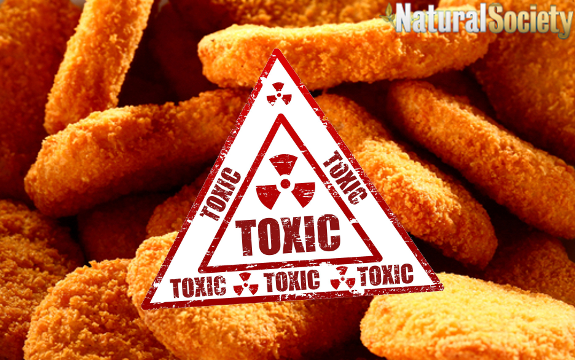Senior Scientist Blasts Industrial Chemicals in U.S. Foods: Report Reveals Toxicity of Food

 Jennifer Sass is a senior scientist with the Natural Resources Defense Council (NRDC), overseeing the chemicals and pesticides in regulatory programs of the Environmental Protection Agency (EPA). In other words, she knows a thing or two about industrial chemicals. Recently, Sass blasted the U.S. food system saying problems with the regulation of industrial chemicals by the Food and Drug Administration are worse than the problems she sees at the EPA—and that’s saying something. She also references a new report revealing how in danger our food is from a toxic-substances perspective.
Jennifer Sass is a senior scientist with the Natural Resources Defense Council (NRDC), overseeing the chemicals and pesticides in regulatory programs of the Environmental Protection Agency (EPA). In other words, she knows a thing or two about industrial chemicals. Recently, Sass blasted the U.S. food system saying problems with the regulation of industrial chemicals by the Food and Drug Administration are worse than the problems she sees at the EPA—and that’s saying something. She also references a new report revealing how in danger our food is from a toxic-substances perspective.
Sass says a recent report that sheds light on the FDA’s oversight of food additives should have everyone concerned. About 1,000 food additives are in the U.S. food supply without FDA knowledge or approval. For those that the FDA knows about (10,000 different additives), fewer than 38% have a “published feeding study” or a study indicating its safety within the food supply. For direct food additives, she says, the number of those studied is even smaller—at only 21.6%.
“It appears the FDA and the food industry were often making safety decisions by comparing one chemical to another rather than doing an actual toxicology study. In making such decisions, they were building a house of cards based on assumptions and unsupported extrapolations instead of direct scientific evidence.”
There are several reasons that such a jumbled mess of industrial chemicals and food additives have made it into our food supplies. One of those—that many chemicals were grandfathered into the system before the 1950s. These have been around for decades and there was never any approved studies on their safety. As for those newer additives, the food industry itself decides what’s safe and what isn’t, and can voluntarily let the FDA know if any substance is Generally Recognized as Safe (GRAS), not proving it to be so.
The report says:
“In practice, almost 80% of chemical additives directly—intentionally—added to food lack the relevant information needed to estimate the amount that consumers can safely eat in FDA’s own database and 93% lack reproductive or developmental toxicity data, although FDA requires feeding toxicology data for these chemicals.”
Not surprisingly, a recent study from Pew researchers indicated that 100% of panel members—experts who review those GRAS additives—have “financial relationships with companies that manufacture the food additives being reviewed.” In other words, they have a financial incentive to let these questionable additives make it into the food supply with as little interference as possible.
According to Sass:
“I’ve spent much of my career extensively reviewing EPA determinations of safety for hazardous chemicals. It is an outrage that FDA is not even looking at many of the chemicals added to food, and that the agency doesn’t even have mandatory notification when industrial chemicals come into our food supply.
I’ve also spent much of my career documenting the problem of chemical manufacturers testing the safety of their own products. It isn’t rocket science to think that a bias and a financial conflict may lead to a misrepresentation of the potential toxicity of a chemical.”
Additional Sources:

The headline for this article wants you to believe that there are toxic substances currently used as Generally Recognized as Safe (GRAS) substances in the food supply, a claim attributed to the Pew report. The report said NO such thing.
The report took issue with the Independently-Determined GRAS process, even though this process is held to the same rigorous scientific standards as GRAS Notification or the Food Additive Petition process. Independent reviewers still have to be able to provide scientific data, such as peer-reviewed studies, to back up their determination that a substance is safe.
Yes, the scientists who serve on the review panels are paid for their time – would you expect them to work for free? Does getting paid somehow make them corrupt? Not in my book. If the FDA officials were in charge of hiring the scientists for all GRAS
review panels, they would probably be hiring the same people who currently
serve on these panels — at a staggering cost to taxpayers.
GRAS substances must have a long history of safe use to be considered GRAS. As a registered dietitian who works closely with the International Food Additive Council, I have found no proof that the current system allowing for Independently-Determined GRAS isn’t working.